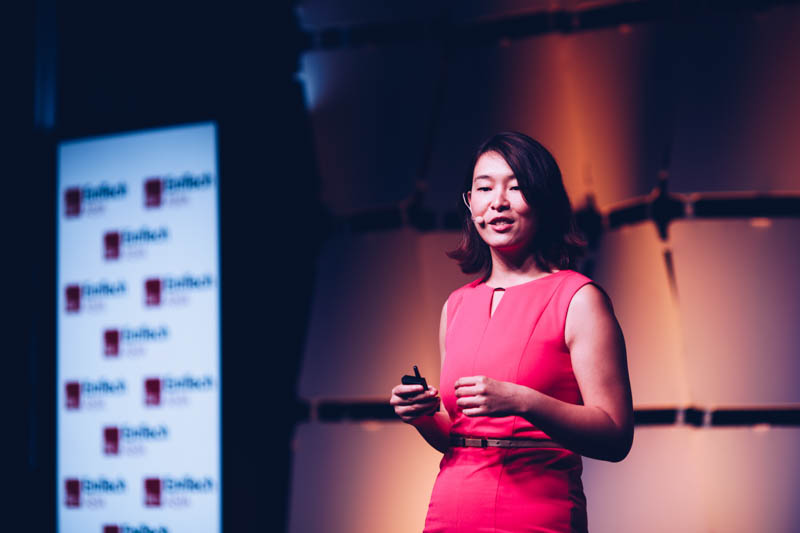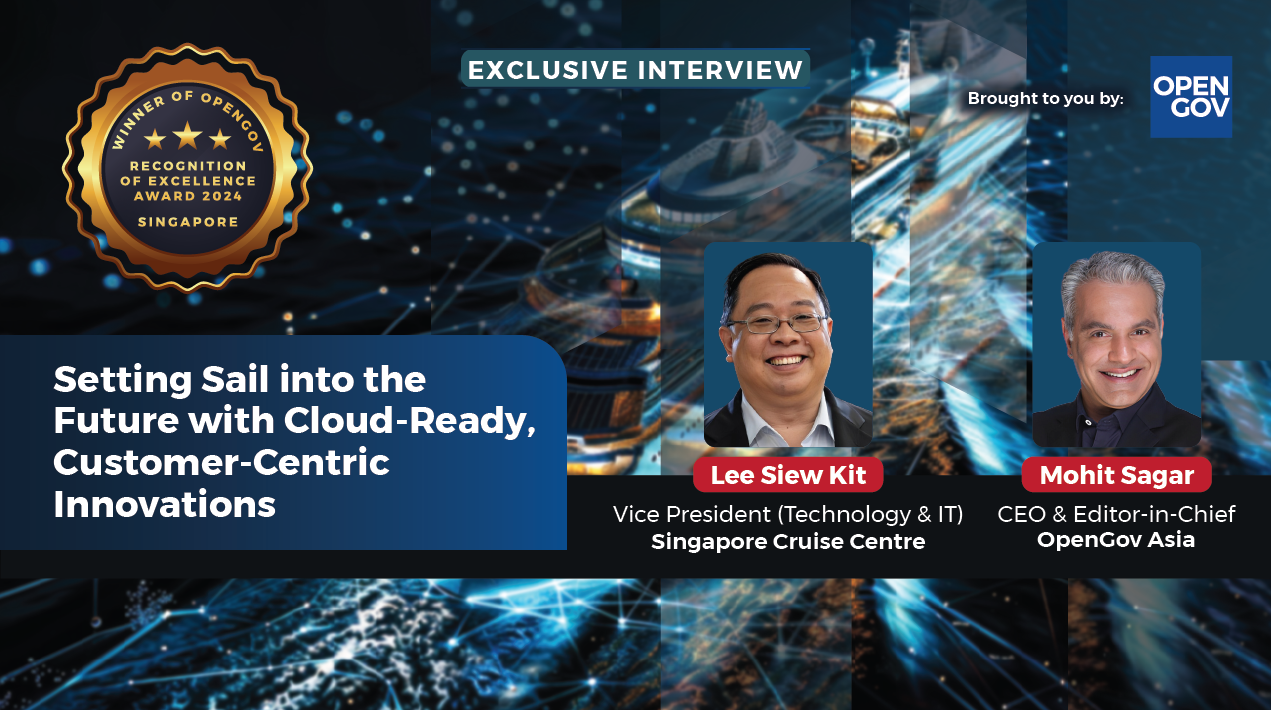
OpenGov was at EmTech Asia 2017 and spoke to Angela Wu, one of EmTech Asia’s 10 Innovators under 35 at the event, recognised for her work in human genome research. Dr. Wu is also an Assistant Professor at HKUST and co-founder of Agenovir, a scientific startup company which focuses on genome editing to treat viral infections and virus-associated diseases.
Your research interests/goals aims to bridge the gap between biology and engineering. How did you arrive at this point and what were your experiences/training in bioengineering like?
I think a lot of times we hear inspirational stories from people who say, “’I woke up one day and felt really inspired by something’, or ‘something happened to me and I became really passionate about a particular thing.’” My story is not that interesting – I have ‘tiger parents’ and they said, “Biology seems to be a really promising area and science is a very stable career,” so I was just a good girl and I just tried it. But the more I studied it, the more it ignited my sense of curiosity and you realise the world is infinite! There’s always more we can understand about science, about how things work in our world. The starting point was my parents saying, “Hey, you should do this,” but once I got into it, it was really propelled by my own sense of curiosity.
I actually started out being more on the engineering side of bioengineering, because I found it really fun to solve problems. But luckily at UC Berkeley, they had a very broad bioengineering programme where we’re free to choose what courses we want to take, which allowed me to explore many different aspects of bioengineering. I just let my curiosity lead me. If I was interested in computer chips, I took a computer chip fabrication and design class. When I was interested in immunology, I took an immunology class.
So in the end I really found my interest in the area between both biology and engineering. Bioengineering bridges that gap between the basic science and applications in average people’s lives and I really enjoy innovating in that space. Of course, you can study a lot of fundamental things about how cells work, or how your organs work… and that’s very fun and cool, but unless you use engineering to bring that knowledge into people’s lives, ordinary people will not be able to associate with it.
How do you feel about being selected as one of the 10 Innovators under 35 at EmTech Asia this year?
I was super excited and very honoured to have been selected. I am also very humbled. I looked at the profiles of the other candidates and seems like everybody is doing very amazing things.
Could you tell us about some of the projects you are working on currently?
I’m still a scientific advisor for Agenovir, which is the startup company I co-founded with my PhD advisor. On that front, they’re doing a lot of work related to CRISPR and genome editing in the viral space, so I still think about the problems in that area. For my own research lab, HKUST, I’m developing new technologies for studying single cells. Right now, this is also a very hot topic – we know a lot about groups of cells as a whole because previously we just didn’t have a lot of resolution and we could only study them as groups, but now we have technologies to pick out individual cells and really understand what they do on an individual level. And I think that’s given us a lot more insight into how different cells work together, and what’s the true diversity of the cell types. So, during my PhD, we looked at one aspect of these cells, which is the RNA.
Now in my own group, we’re trying to invent new ways to look at many different aspects of the same cell, such as, can we look at the DNA and RNA from that same cell? Whereas previously if we look at the RNA, the cell will be destroyed and we can’t look at other aspects. Another thing is, right now, we have to pick this cell out from its native environment to study it. So, we’re also thinking about whether we can measure RNA from the cell right in the tissue itself without having to pull out the cell, so that it’s still in its native environment? These are some of the various technologies we’re inventing to better understand cells.
What were some of the most memorable milestones in the course of your research?
I think the very first time that I did the single cell experiment, studying the RNA, I think that was a very exciting experiment, that one single experiment. We use this microfluidic biochip, we put tons of cells in there, and then after the chip was done running, you can image the cells and you can see individual little cells being caught in each chamber inside this chip. And then we analysed the data from each individual cell, comparing them to each other. That was such an enlightening moment because before, people haven’t looked at it at such resolution. I felt like, “Wow, I’m one of the very first people to do this!” and that was really exciting.
I think another milestone was helping to co-found a company. I think in my gut, I still have a very entrepreneurial spirit, and that experience really allowed me to explore what it’s like to bring an academic concept into a commercial setting.
You co-founded Agenovir in 2015. Could you tell us more about what Agenovir does and how the idea to start your own company came about?
The technology was first invented by the other co-founder of the lab and it is very revolutionary. At EmTech you heard about CRISPR technology and how we can edit genes in our cells now using this technique. So most other people when they’re thinking about CRISPR, they’re thinking about changing things within the human genome. But the way we thought about it was, if we can edit things in our human genome, why not use it to remove things from the genome that didn’t belong there in the first place?
For example, when a virus infects your cell, it will often insert its own viral genome into the human genome somewhere. That means you can never get rid of that virus; it’s with you for the rest of your life. This means there are certain viral infections that cannot be cured, for example, herpes virus infection. People have herpes outbreaks and you can only manage the symptoms. The virus is always with you in your body so you can never be fully cured. Using this CRISPR therapy, now we can actually really go in there, cut the virus out and completely cure you.
Since we started the company, there have been other people who have demonstrated that you can do this in HIV, we’ve demonstrated that you can do this for cervical cancer-causing HPV and also for herpes virus. So, this is kind of a different angle to the CRISPR application. That’s what Agenovir does.
Who or what have been your greatest inspirations in moving you towards what you are doing now?
I really enjoyed the entrepreneurial aspect of trying to bring a technology to the market. So my goal is to create useful technologies that we can either apply in the lab to help scientists study natural phenomenon, or apply in the clinic to help patients. Personally speaking, my PhD advisor was a great role model and a great inspiration to me because of the way he discovers cool things in the lab and then bringing them to the market, and does so very well.
Do you have any specific contributions you would like to make through your work?
We’ve talked a bit about that, in terms of inspiration and why I’m doing what I’m doing. Another motivation, getting away a little bit from the science, is that I feel that women are very under-represented in the science and engineering, technology and entrepreneurship areas– all those traditionally male-dominated fields. I hope that if I do well, other girls can see that it’s possible, that you can contribute to this field, even if you’re a girl. I wouldn’t say I want to be a role model but I just want to show that it’s possible.
















